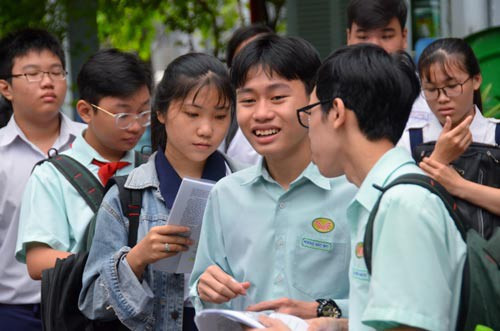Tran Thanh Hai, rector at the Vien Dong Junior College in HCM City, pointed out that this situation has occurred because training of mid and high-skilled workers is still inadequate.

Hai cited labor bulletin No 21, Q1, 2019 released by the Ministry of Labor, War Invalids and Social Affairs (MOLISA) and the General Statistics Office (GSO) as saying that the number of unemployed trained workers in Q4 2018 decreased sharply, but remained high.
These included 124,500 workers with higher education level, 65,100 workers finishing junior college, 52,700 finishing intermediate school (2-year training) and 18,100 workers finishing short term training courses.
If noting that the average training cost is VND10 million per student per annum, the total cost to train redundant skilled workers would be VND2.5 trillion. Hai attributed this to the problems in training and the weak connection between vocational education establishments and enterprises.
| If noting that the average training cost is VND10 million per student per annum, the total cost to train redundant skilled workers would be VND2.5 trillion. Hai attributed this to the problems in training and the weak connection between vocational education establishments and enterprises. |
The solution is that vocations schools need to join forces with enterprises to train workers based on the demands from enterprises.
Pham Xuan Khanh, rector of the Hanoi Hi-tech Junior College, also commented that the proportion of trained workers is low, which makes Vietnam lack the labor force with high profession in different fields.
He also pointed out many problems of the Vietnamese labor force – the lack of skilled workers; the low capability of workers to look for jobs and change careers; and the workers’ low foreign language and informatics skills.
The Japan International Cooperation Agency (JICA) has released a report on the results of a survey on the quality of technical training and vocational education of 76 Vietnamese and foreign enterprises.
The report says graduates of vocational schools have basic skills, are diligent and comply with regulations, but the awareness, working attitude, and responsibility towards businesses are not appreciated, and the working capability is low.
“The Vietnamese labor force is abundant and the demand for jobs is great, but businesses still fall short of labor. Many of them have had to hire foreign workers,” Khanh said, pointing out that the problem lies in the quality of the labor force which still cannot satisfy the requirements.
Wendy Cunningham, a senior economist at the World Bank in Vietnam, noted that many big foreign investors are considering relocating their factories to Vietnam and need skilled workers. This is a great opportunity for Vietnam, but the problem is that many workers are still not ready to join the global labor supply chain.
There are 1,917 vocational training establishments, including 400 junior colleges, 492 intermediate schools and 1,025 vocational education centers.
Le Ha

Australian project attracts students to study in Vietnam
Dr Tran Thi Ly is one of the 50 most influential women in Vietnam in the field of science anf education recognized by Forbes Magazine.

Vietnamese female scientist publishes new 'Nature' study
A new study of free-living soil nematodes co-authored by Vietnamese scientist Nguyen Thi Anh Duong was published in Nature – the world's leading multidisciplinary science journal.
 Many school graduates cannot find jobs, and enterprises complain they cannot find suitable workers or have to retrain them.
Many school graduates cannot find jobs, and enterprises complain they cannot find suitable workers or have to retrain them.